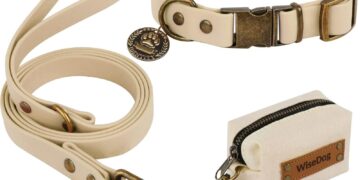Table of Contents
In a Nutshell: Your Mission-Ready Canine Companion
Choosing an outdoor dog isn’t about picking from a list of “best breeds.” That common approach is a gamble that too often ends in heartbreak for families and a trip to the shelter for the dog.
The real secret to a successful, lifelong partnership is to stop thinking like a consumer and start thinking like an expedition leader.
This guide will walk you through a new framework—The Expedition Planning Model—to help you find the right canine partner for your family’s unique adventure.
The Four Phases of a Successful Canine Expedition:
- Phase 1: The Pre-Expedition Risk Assessment. Before you even think about breeds, you must conduct an honest audit of your own family’s lifestyle, capabilities, and environment. What is your true activity level? What is your climate? Who is on your team (kids, elderly)? What are your resources of time and money?
- Phase 2: Recruiting Your Canine Expedition Partner. Match the dog to the mission. Instead of a simple breed list, we’ll explore “Canine Archetypes”—like the Endurance Athlete, the All-Terrain Specialist, and the Gentle Giant—to find a partner whose innate skills and temperament align with the life you can actually provide.
- Phase 3: Mission Logistics & Training Protocols. Success in the field depends on preparation. This means mastering mission-critical safety commands (like a bomb-proof recall) and packing the essential gear for any contingency.
- Phase 4: Sourcing Your Partner. The choice between a reputable breeder and a rescue shelter isn’t a moral dilemma; it’s a strategic decision. We’ll analyze the distinct risk and reward profiles of each path to help you make the right choice for your expedition.
By following this framework, you’ll move beyond the superficial and make a well-informed choice that sets you and your new companion up for a decade or more of shared adventures.
Part I: The Failed Mission – Why My First “Perfect” Outdoor Dog Broke My Heart
I can still picture the photo that started it all.
A Siberian Husky, poised on a snowy ridge, his piercing blue eyes reflecting a wild, untamable spirit.
For my family and me, that image was a promise.
It was the promise of epic hikes, of a loyal companion trotting beside us on mountain trails, of a furry head resting on my lap by a crackling campfire.
We were an active family, lovers of the outdoors, and we were ready for our adventure dog.
Like so many people, we fell into the trap of what I now call the “Disney Model” of choosing a dog.1
We saw a beautiful animal that embodied our idealized lifestyle, and we made our decision based almost entirely on that romantic notion.
We skimmed a few “Top 10 Hiking Dogs” lists, saw the Husky was a frequent star, and that was enough due diligence for us.2
We didn’t just want a dog; we wanted
that dog.
The one from the picture.
We named him Kai, and for the first few weeks, it was pure magic.
But soon, the cracks in our fantasy began to show.
Our “active lifestyle” was, in reality, a “weekend warrior” lifestyle.
We loved a good Saturday hike, but the rest of the week was work, school, and suburban routine.
For Kai, a creature bred for generations to pull light sleds for dozens of miles a day, this was a prison of boredom.3
The signs of our mismatch were catastrophic.
The destructive chewing wasn’t malice; it was the frantic work of an unemployed genius.5
The craters he dug in our backyard weren’t just holes; they were escape tunnels, engineered by a master of egress who viewed our six-foot fence as a minor inconvenience.7
His hyperactivity wasn’t a phase; it was the baseline state of a world-class endurance athlete with no race to R.N.4
We tried longer walks, more toys, training classes.
But we couldn’t change his fundamental nature, nor could we realistically change the fundamental structure of our lives.
We were trying to fit a square peg into a round hole, and the friction was wearing us all down.
The day I took him to meet another family—one with a huge, securely fenced property and a commitment to daily, high-mileage runs—was one of the hardest of my life.
It was a profound, gut-wrenching failure.
But Kai wasn’t a “bad dog.” He was a brilliant dog in the wrong job.
The failure wasn’t his; it was mine.
I had failed in the most critical phase of our journey together: the selection.
My story, I soon learned, is tragically common.
When you look at the data on why dogs are surrendered to shelters, you see the echoes of my own failure.
The top reasons cited are often “behavioral issues” like hyperactivity, destructiveness, or excessive barking, alongside owner-related issues like “not enough time”.5
But these aren’t separate, isolated problems.
They are the predictable, downstream consequences of a single, catastrophic error made at the very beginning: a fundamental mismatch between the dog’s inherent needs and the owner’s actual lifestyle.12
The shelter statistics are not a reflection of “bad dogs,” but a testament to a broken selection process—a process that prioritizes appearance and fantasy over honest self-assessment and deep research.1
Part II: The Expedition Epiphany – A New Map for a Lifelong Journey
In the months after rehoming Kai, I became obsessed.
I needed to understand the anatomy of my failure.
I read everything I could about dog behavior, breed history, and responsible ownership.
But the real breakthrough, the epiphany that changed everything, came from a completely unexpected source: a book about Ernest Shackleton’s Antarctic expeditions.
I was captivated by the sheer, life-or-death meticulousness of the planning.
Every man, every dog, every biscuit was chosen for a specific purpose.
Success, and survival, depended not on hope or romantic notions, but on a brutal, honest assessment of the mission, the environment, and the capabilities of the team.15
They didn’t just pick the “best” dogs; they picked the right dogs for the specific, grueling journey ahead.
And that’s when it hit me.
Bringing a dog into your family for a 10- to 15-year journey through the unpredictable terrain of life is not a casual shopping trip.
It’s an expedition.
This realization gave me a completely new map.
It reframed the entire problem.
The goal was no longer to “find the perfect dog,” a passive act of consumption.
The goal was to become an “expedition leader,” an active and responsible planner building a team for a long-term mission.
This mental shift is the single most important step you can take.
It moves the focus from the dog’s perceived qualities (“Is he a good dog?”) to your own capabilities and responsibilities (“Am I the right leader for this kind of dog?”).
This proactive mindset is the antidote to the “Disney Model” and the key to preventing the mismatches that fill our shelters.
From this, I developed what I call the Expedition Planning Framework, built on four core pillars that mirror the principles of any successful, high-stakes venture.
The Four Pillars of a Successful Canine Expedition
- Mission Definition & Risk Assessment: Before a single step is taken, a good leader defines the objective and identifies all potential risks.15 For a family, this means conducting a brutally honest audit of your real life, not your fantasy life. What is the mission? Weekend hikes? Daily trail runs? A calm companion for camping trips? What are the risks? A small yard? A hot climate? Young children?
- Team Composition: Expeditions are staffed with specialists. You don’t recruit a deep-sea diver for a mountaineering trip.15 Choosing a dog is about recruiting a partner whose innate skills, energy level, and temperament are perfectly suited to your specific “mission profile.” It’s about matching the dog’s genetic blueprint to your family’s terrain.
- Logistics & Training Protocols: No expedition succeeds without a solid logistical plan. This includes the right equipment (gear), a reliable communication system (training), and proper provisions (nutrition and healthcare).16 For your canine partner, this means mastering life-saving commands and having the right gear to ensure their safety and comfort in the field.
- Sourcing & Contingency Planning: Where you source your team member—from a pool of seasoned veterans or from a new academy—is a strategic choice. The decision between a rescue and a breeder is similar, each with its own risk profile. A good leader also has contingency plans for when things inevitably go wrong, from a trailside injury to a behavioral challenge.15
This framework isn’t about taking the fun out of getting a dog.
It’s about honoring the gravity of the commitment and ensuring the adventure is a joyful, lifelong success for every member of the team—two-legged and four.
Part III: Phase 1: The Pre-Expedition Risk Assessment (Charting Your Family’s Terrain)
This is the most critical phase, and it has nothing to do with dogs.
It has everything to do with you.
The biggest mistake people make is choosing a dog for the life they wish they had, not the life they actually live.1
An honest self-assessment is your map and compass.
Without it, you’re navigating blind.
Grab a notebook and answer these questions with unflinching honesty.
Your Mission Profile: An Honest Lifestyle Audit
- Activity Level & Type: This is non-negotiable. Be specific and realistic.
- How many hours per day, on average, can you dedicate to focused, dog-centric exercise? A 30-minute leashed walk around the block is a universe away from a 90-minute off-leash run in the woods.1
- What kind of activity is it? Are you a high-mileage runner, a weekend hiker, a casual walker, a camper, a swimmer? The physical demands of these activities are vastly different.
- Categorize your family: Are you “Daily High-Intensity Warriors” (running/biking daily) or “Weekend Adventurers” (bigger trips on Saturday/Sunday, shorter walks on weekdays)? This distinction is crucial.
- Environmental Hazards (Your Climate & Home): Your dog will live in your environment 24/7.
- Climate: Do you live in the blistering heat of Arizona or the frigid cold of Alaska? A thick-coated Bernese Mountain Dog or Siberian Husky can thrive in the cold but is at serious risk for heatstroke in the south.17 A short-coated Vizsla might need a jacket in a northern winter.
- Home Base: Do you have a large, securely fenced yard? Or do you live in a city apartment on the 10th floor? Some breeds absolutely require space to roam, while others can adapt to apartment life if their exercise needs are met.8 A high fence is a non-negotiable for known escape artists like Huskies.7
- Crew Capabilities (Your Family): Who is on your expedition team?
- Children: Do you have young, rambunctious kids? You’ll need a dog known for its sturdiness and patience, like a Labrador or Bernese Mountain Dog.20 A sensitive or small dog might be overwhelmed.
- Other Pets: Do you have cats or other small animals? Breeds with a high prey drive can be a significant risk, requiring immense management.22
- Experience Level: Is this your first dog? Be honest. A novice owner taking on a highly intelligent, independent, and powerful breed is often a recipe for frustration and failure. Some dogs are eager to please, while others will challenge your leadership at every turn.1
- Logistical Resources (Time & Money): Expeditions require resources.
- Budget: Can you afford more than just the adoption fee? Factor in high-quality food, routine vet care, emergency funds (which can run into the thousands), grooming, and potential training classes.8
- Time: Beyond exercise, how much time can you commit? A long, double-coated dog requires hours of grooming each month to prevent painful matting.3 A highly intelligent dog needs daily mental stimulation through training and puzzle toys to prevent boredom-induced destruction.6
Once you have this written down, you have your Mission Profile.
This document is your North Star.
Every decision from this point forward must align with this reality.
Part IV: Phase 2: Recruiting Your Canine Expedition Partner (Matching the Dog to the Mission)
With your Mission Profile in hand, you are now ready to recruit your canine partner.
Notice the language: we are recruiting, not shopping.
We are looking for a teammate whose innate abilities and temperament are a perfect match for the expedition you just defined.
To move beyond simplistic “best of” lists, I’ve grouped suitable outdoor breeds into functional Expedition Archetypes.
Find the archetype that best aligns with your Mission Profile, and you will find your ideal partner.
Archetype 1: The Endurance Athlete (The Ultra-Marathoner)
- Mission Profile: You are a serious, high-mileage athlete. Your idea of a good time is a 10-mile trail run, a 20-mile bike ride, or a multi-day backpacking trip. You need a dog with a massive fuel tank, incredible stamina, and a love for the run.
- Exemplars: Siberian Husky, Vizsla, German Shorthaired Pointer, Weimaraner.
- Deep Dive—The Siberian Husky: This is the specialist’s specialist. Bred to pull light loads over immense frozen distances, their entire being is geared for efficient, long-distance trotting.3
- Temperament: Friendly, outgoing, and generally non-aggressive towards people and other dogs, but also fiercely independent and intelligent. They were bred to think for themselves, which can make training a challenge for novices.22 They are not eager-to-please in the way a Golden Retriever is.
- Energy & Needs: This is not a dog for a casual lifestyle. They require hours of vigorous exercise daily. A tired Husky is a happy Husky; a bored Husky is a destructive, howling, escape-artist Husky.6 Their prey drive is extremely high, and they should never be trusted off-leash in an unfenced area.3
- Grooming & Health: They have a thick double coat and “blow” it twice a year, creating blizzards of fur. They are generally healthy with a lifespan of 12-14 years.3
- Deep Dive—The Vizsla: The “Velcro dog” of the sporting world. This Hungarian pointer is a powerhouse of energy combined with profound sensitivity and affection.28
- Temperament: Extremely gentle, loving, and deeply bonded to their family. They need to be with their people and are prone to separation anxiety if left alone for long periods.28 They are sensitive and do not respond well to harsh training methods.28
- Energy & Needs: They require at least an hour of hard, off-leash running every day. They are ideal jogging or biking companions.29 Without this outlet, their energy can manifest as anxiety and destructive behavior.
- Grooming & Health: Their short, sleek coat requires minimal grooming.29 They are a generally healthy breed with a lifespan of 12-14 years.
Archetype 2: The All-Terrain Specialist (The Versatile SUV)
- Mission Profile: You are the classic active family. You love your weekend hikes, trips to the lake, and throwing a ball in the backyard. You need a dog that is adaptable, trainable, reliable with kids, and has an “off switch” for quiet evenings at home.
- Exemplars: Labrador Retriever, Golden Retriever, Australian Shepherd.
- Deep Dive—The Labrador Retriever: For decades, one of North America’s most popular breeds for a reason: versatility.20
- Temperament: Generally friendly, outgoing, and eager to please, which makes them highly trainable.30 They are typically excellent with children and other pets.
- Energy & Needs: Don’t mistake their good nature for low energy. Labs, especially in their youth, are enthusiastic athletes that require lots of exercise and a “job” to do, like retrieving.20 They need consistent daily walks and opportunities to run and swim to be well-behaved in the home.
- Grooming & Health: Their short, dense coat sheds regularly and requires weekly brushing. They are prone to certain health issues like hip and elbow dysplasia and obesity if overfed and under-exercised.
Archetype 3: The Gentle Giant (The Basecamp Guardian)
- Mission Profile: Your outdoor adventures are more about the destination than the race. You love camping, steady (not strenuous) hikes, and enjoying the peace of the wilderness. You want a calm, imposing, but deeply gentle companion who is content to be the guardian of your basecamp.
- Exemplars: Bernese Mountain Dog, Newfoundland.
- Deep Dive—The Bernese Mountain Dog: A stunningly beautiful dog with a heart of gold, bred for strength and companionship in the Swiss Alps.21
- Temperament: Self-confident, good-natured, and exceptionally gentle and patient, especially with children.21 They are deeply devoted to their families but can be aloof with strangers. They are sensitive and thrive on positive reinforcement.32
- Energy & Needs: While they are strong working dogs, they are not built for endurance running. They require moderate daily exercise, like long walks, but are not suitable partners for marathon training.19 They thrive in cold weather and can overheat easily in the summer.35
- Grooming & Health: Their thick, long double coat requires frequent brushing (several times a week) to prevent mats and they are heavy shedders.25 Critically, they have a tragically short lifespan, often only 7-10 years, due to a high incidence of cancers.33 This is a significant emotional “risk” for any family to consider.
Archetype 4: The Expedition Mutt (The Adaptable Survivor)
- Mission Profile: You are open-minded, value personality over pedigree, and are willing to adapt your adventures to your dog’s unique traits. You might be looking to skip the chaotic puppy phase and are drawn to the idea of giving a deserving dog a second chance.
- Exemplars: The infinite variety of mixed-breed dogs found in shelters.
- Deep Dive—The Mixed-Breed Dog: Often overlooked in the search for the “perfect” breed, the humble mutt can be the most sensible choice of all.2
- Temperament & Energy: The single greatest advantage of adopting an adult mixed-breed is that their personality and energy level are already established. What you see is what you get.38 You can find a dog whose energy perfectly matches your lifestyle, removing the guesswork of raising a puppy.
- Health & Resilience: Mixed-breed dogs can benefit from “hybrid vigor,” potentially making them less susceptible to the genetic diseases that can plague some purebreds.39 They are often robust and adaptable.
- The Perfect Fit: Shelters are full of dogs surrendered for lifestyle mismatches. This means there is likely a dog waiting for you whose previous family’s “too much energy” is your “perfect hiking partner”.20
Expedition Partner Profile Matrix
To help you visualize the trade-offs, here is a matrix comparing the archetypes across the key factors from your risk assessment.
| Feature | Endurance Athlete | All-Terrain Specialist | Gentle Giant | Expedition Mutt (Adult) |
| Daily Exercise Requirement | 90-120+ min (Vigorous) | 60+ min (Moderate-Vigorous) | 30-60 min (Moderate) | Variable (Known at Adoption) |
| Trainability & Independence | Intelligent, Independent Thinker | Eager to Please, Trainable | Eager to Please, Sensitive | Variable (Known at Adoption) |
| Good with Children/Pets | Good with Supervision | Excellent | Excellent | Variable (Assess Individually) |
| Grooming & Shedding | Very High (Husky) / Low (Vizsla) | High | Very High | Variable |
| Cold Weather Tolerance | Excellent (Husky) / Moderate (Vizsla) | Good | Excellent | Variable |
| Heat Weather Tolerance | Poor (Husky) / Good (Vizsla) | Moderate | Poor | Variable |
| Space Requirement | Yard Essential | Yard Preferred | Yard Preferred | Variable |
| Tolerance for Being Alone | Low (Prone to Destruction) | Moderate | Low (Prone to Anxiety) | Variable (Known at Adoption) |
| Common Health Concerns | Generally Healthy | Hip/Elbow Dysplasia, Obesity | Cancers, Bloat, Joint Issues | Generally Fewer Genetic Issues |
| Avg. Lifespan | 12-14 years | 10-13 years | 7-10 years | Variable |
| Best For | Marathon Runners, Bikers | Weekend Hikers, Active Families | Campers, Steady Walkers | Adaptable, Experienced Owners |
Part V: Phase 3: Mission Logistics & Training Protocols
Recruiting the right partner is only half the battle.
A successful expedition depends on having the right procedures and equipment to ensure everyone’s safety in the field.
For your canine partner, this means mission-critical training and a well-stocked “go-bag.”
Foundational Field Training: Your Safety Protocols
This is not about teaching “paw” or “roll over.” These are life-saving commands for the unpredictable outdoor environment.
- The “Bomb-Proof” Recall (“Come”): This is the single most important command your outdoor dog will ever learn. It is not a suggestion; it is a lifeline that can pull your dog away from a cliff edge, a wild animal, or a busy road. Train this command relentlessly, using extremely high-value rewards (like chicken or cheese) that are reserved only for recall practice. The goal is an instantaneous, joyful response every single time you say the word.41
- “Leave It”: The wilderness is full of things your dog shouldn’t eat or roll in, from poisonous mushrooms and animal carcasses to another hiker’s dropped sandwich. A sharp, authoritative “Leave It!” command can prevent a veterinary emergency or a confrontation with wildlife. Practice this at home until it is reflexive.41
- Loose Leash Walking & Pacing Cues: A dog that pulls you down a steep, rocky trail is a danger to both of you. Mastering loose-leash walking is essential for safety. Also, teach pacing cues. A simple “Easy” or “Whoa” can tell your dog to slow down on tricky terrain, while a cheerful “Let’s Go!” can encourage them to pick up the pace on a clear path.45
- “Settle” or “Place”: This command teaches your dog to go to a specific spot (like a small mat or bed) and stay there until released. It is invaluable at a campsite for keeping your dog calm and out from underfoot while you’re cooking, setting up a tent, or managing a campfire.
Your Canine Go-Bag: Essential Expedition Gear
Never hit the trail without the right equipment.
Your dog’s go-bag should be as thoughtfully packed as your own.46
- Navigation & Identification:
- Collar or Harness: A well-fitted harness is generally safer and more comfortable for hiking than a collar, as it distributes pressure across the chest instead of the neck.
- Leash: A sturdy 6-foot nylon or leather leash. Avoid retractable leashes, which offer poor control on trails.
- ID Tags & Microchip: An ID tag with your name and phone number is your first line of defense. A microchip is the permanent backup.
- Sustenance & Hydration:
- Water: Carry at least 8 ounces of water per dog per hour of hiking. Do not let your dog drink from standing puddles, which can contain harmful bacteria and parasites.
- Collapsible Bowl: Lightweight and essential for giving your dog food and water without waste.
- Food & High-Energy Snacks: Pack their regular food and some high-calorie snacks to fuel them on long treks.
- Safety & First Aid:
- Canine First-Aid Kit: Include essentials like antiseptic wipes, gauze, self-adhering bandages, tweezers (for ticks and splinters), and any dog-specific medications.
- Waste Bags: Pack out everything you pack in. Leave no trace.
- Contingency Gear:
- Booties: To protect paws on extremely rough, hot, or icy terrain.
- Reflective Jacket or Light: For visibility in low-light conditions.
- Canine Flotation Device: Non-negotiable for any activity involving boats or deep water.
Part VI: Phase 4: Sourcing Your Partner – Two Paths to the Trailhead
Your final strategic decision is where to recruit your new team member.
This is not a moral judgment between “good” and “bad” options.
Both paths—a reputable breeder or a rescue shelter—can lead to a fantastic partner.
They simply represent different strategies with different risk and reward profiles.47
The Reputable Breeder Route (Maximizing Predictability)
- When to Choose this Path: This route is best for families with highly specific, non-negotiable requirements. This could include the need for a hypoallergenic coat, a dog to be trained for a specific task (like service work), or a very predictable adult size and temperament for a home with small children. You are essentially investing in a known genetic and developmental history.47
- The Vetting Process: This path requires immense diligence to separate ethical breeders from irresponsible backyard breeders and cruel puppy mills. A reputable breeder’s primary goal is the betterment of the breed, not profit.
- They Vet You: A good breeder will interview you as thoroughly as you interview them. They will ask about your lifestyle, experience, and home to ensure their puppy is going to the right environment.49
- Health is Paramount: They will provide proof of genetic health testing for the parent dogs for conditions common to the breed.50
- Transparency is Key: They will insist you visit their home, meet the mother dog (and father, if possible), and see the clean, stimulating environment where the puppies are raised. They will never offer to ship a puppy sight-unseen or meet you in a parking lot.50
- They are a Lifelong Resource: A great breeder offers a health guarantee and will insist on taking the dog back at any point in its life if you can no longer care for it.50
The Shelter/Rescue Route (The Known Quantity)
- When to Choose this Path: This is an excellent path for families who are flexible on breed, want to bypass the intense demands of the puppy stage, and are motivated by giving a deserving dog a second home. The primary advantage is that an adult dog’s core traits are already formed.38
- The Vetting Process: Your goal is to gather as much accurate information as possible to ensure a good match.
- What You See is What You Get: An adult dog’s size, coat, and—most importantly—energy level and core personality are already established. There are no surprises. You can see if their energy matches your Mission Profile right away.38
- Lean on the Experts: Shelter staff and foster parents are invaluable sources of information. They have spent time with the dog and can give you an honest assessment of its behavior, quirks, and needs. Ask detailed questions about its history and how it behaves in a home environment.
- Consider Breed-Specific Rescues: These organizations are a fantastic middle ground. They are staffed by experts on a particular breed who can provide deep insight and do an excellent job of matching their dogs to the right lifestyle.38
Conclusion: The Adventure Begins
After my failure with Kai, I put my own framework to the test.
My family completed our Mission Profile.
We were honest: we were Weekend Adventurers who needed a dog with moderate energy, a trainable nature, and a proven history with kids.
Our expedition called for an All-Terrain Specialist or an adaptable Expedition Mutt.
We spent months visiting local shelters, talking to staff, and waiting for the right partner.
Then we met Cooper.
He was a two-year-old Lab mix—a classic Expedition Mutt.
His foster family told us everything: he loved long hikes but was happy to snooze on the couch on a rainy Tuesday.
He was gentle with their toddler.
He had a solid “leave it.” He was, in short, the living embodiment of our Mission Profile.
Today, Cooper is snoring at my feet as I write this.
His pack is sitting by the door, ready for our hike this weekend.
He is not the dog I saw in that glossy photo years ago, but he is, without a doubt, the perfect partner for our real-life expedition.
The journey to finding the right outdoor dog is not about finding a flawless animal from a list.
It is about becoming a prepared, educated, and responsible expedition leader.
It’s about the profound shift from asking “What dog is best?” to asking “What kind of life can I promise a dog, and which dog is best suited for that promise?”
When you make that shift, you’re no longer just getting a P.T. You are forging a partnership.
And with the right map and the right partner, the adventure of a lifetime is just beginning.
Works cited
- Huge Mistakes People Make When Looking for a Dog – McCann …, accessed August 15, 2025, https://www.mccanndogs.com/blogs/articles/huge-mistakes-people-make-when-looking-for-a-dog
- The Best Dog for the Outdoors? The Humble Mutt., accessed August 15, 2025, https://www.outsideonline.com/culture/opinion/best-dog-outdoors-humble-mutt/
- Siberian Husky Dog Breed Information – American Kennel Club, accessed August 15, 2025, https://www.akc.org/dog-breeds/siberian-husky/
- Siberian Husky Dog Breed Health and Care – PetMD, accessed August 15, 2025, https://www.petmd.com/dog/breeds/siberian-husky
- Exploring the Bond – Factors associated with the decision to surrender a pet to an animal shelter – AVMA Journals, accessed August 15, 2025, https://avmajournals.avma.org/view/journals/javma/209/4/javma.1996.209.04.738.pdf
- The Vet’s Guide to Siberian Husky Dogs: Facts, Care, and Training Tips, accessed August 15, 2025, https://vetslovepets.com.au/blogs/dog/siberian-husky-breed-guide
- Siberian Husky – PDSA, accessed August 15, 2025, https://www.pdsa.org.uk/pet-help-and-advice/looking-after-your-pet/puppies-dogs/large-dogs/siberian-husky
- Common Surrender Reasons (Dogs) • MSPCA-Angell, accessed August 15, 2025, https://www.mspca.org/pet_resources/common-surrender-reasons-dogs/
- The Top 9 Reasons Why People Give Up Their Pets – FOUR PAWS International, accessed August 15, 2025, https://www.four-paws.org/our-stories/publications-guides/the-top-9-reasons-why-people-give-up-their-pets
- Owner-Related Reasons Matter more than Behavioural Problems—A Study of Why Owners Relinquished Dogs and Cats to a Danish Animal Shelter from 1996 to 2017, accessed August 15, 2025, https://pmc.ncbi.nlm.nih.gov/articles/PMC7341242/
- Investigating the Reasons behind Companion Animal Relinquishment: A Systematic Content Analysis of Shelter Records for Cats and Dogs, 2018–2023 – MDPI, accessed August 15, 2025, https://www.mdpi.com/2076-2615/14/17/2606
- Returning a Recently Adopted Companion Animal: Adopters’ Reasons for and Reactions to the Failed Adoption Experience – ResearchGate, accessed August 15, 2025, https://www.researchgate.net/publication/7305403_Returning_a_Recently_Adopted_Companion_Animal_Adopters’_Reasons_for_and_Reactions_to_the_Failed_Adoption_Experience
- What are some beginner mistakes you’ve made when getting your first pet? – Reddit, accessed August 15, 2025, https://www.reddit.com/r/UK_Pets/comments/16ck75e/what_are_some_beginner_mistakes_youve_made_when/
- What I wish people considered before choosing a dog breed – PetsRadar, accessed August 15, 2025, https://www.petsradar.com/dogs/dog-breeds/choosing-a-dog-breed-things-i-wish-people-would-consider-first
- Getting started: field safety principles for expeditioners, accessed August 15, 2025, https://www.rgs.org/exploration/support/resources/field-safety-principles-for-expeditioners/
- Expedition success requires logistical planning – Human Kinetics Canada, accessed August 15, 2025, https://canada.humankinetics.com/blogs/excerpt/expedition-success-requires-logistical-planning
- Best Outdoor Dog Breeds | Purina US, accessed August 15, 2025, https://www.purina.com/dogs/dog-breeds/collections/best-outdoor-dog-breeds
- The Ultimate Dog Guide for Hiking & Camping with Dogs – Wolf Republic, accessed August 15, 2025, https://www.wolfrepublic.com/blogs/field-guide/the-ultimate-dog-guide-for-hiking-camping-with-dogs
- Bernese Mountain Dog History: Where the Breed Originated – American Kennel Club, accessed August 15, 2025, https://www.akc.org/expert-advice/dog-breeds/bernese-mountain-dog-history/
- The Best Family Dogs, accessed August 15, 2025, https://www.outsideonline.com/culture/active-families/best-family-dogs
- Bernese Mountain Dog Dog Breed Information, accessed August 15, 2025, https://www.akc.org/dog-breeds/bernese-mountain-dog/
- Siberian Husky Dog Breed Guide | BorrowMyDoggy, accessed August 15, 2025, https://www.borrowmydoggy.com/doggypedia/dog-breed-guides-husky
- Husky 101 – History, Breed Standard and Temperament, accessed August 15, 2025, https://hhshr.com/husky-101—breed-standard-and-temperament.html
- 10 Mistakes New Dog Owners Make – Central Illinois Doodles, accessed August 15, 2025, https://centralillinoisdoodles.com/blog/10-mistakes-new-dog-owners-make/
- Bernese Mountain Dog breed guide: Care, training, and fun facts – BorrowMyDoggy, accessed August 15, 2025, https://www.borrowmydoggy.com/doggypedia/dog-breed-guides-bernese-mountain-dog
- The Siberian Husky is a medium-sized working dog, quick and light on, accessed August 15, 2025, https://cdn.akc.org/SiberianHusky.pdf
- Siberian Husky: Your Complete Guide – Dog Academy, accessed August 15, 2025, https://dogacademy.org/breeds/siberian-husky
- Vizsla Breed Facts and Information – Petco, accessed August 15, 2025, https://www.petco.com/content/content-hub/home/breeds/dog-breeds/vizsla.html
- Vizsla Dog Breed Information – American Kennel Club, accessed August 15, 2025, https://www.akc.org/dog-breeds/vizsla/
- Best Family Dogs: Which Breed Is Right for You? – American Kennel …, accessed August 15, 2025, https://www.akc.org/expert-advice/dog-breeds/best-family-dogs/
- Official Standard of the Bernese Mountain Dog General Appearance, accessed August 15, 2025, https://images.akc.org/pdf/breeds/standards/BerneseMountainDog.pdf
- How to Train a Bernese Mountain Dog Puppy: Milestone Timeline – American Kennel Club, accessed August 15, 2025, https://www.akc.org/expert-advice/nutrition/train-bernese-mountain-dog-puppy-milestone-timeline/
- Bernese Mountain Dog Breed Guide: History, Care Tips – Pawlicy Advisor, accessed August 15, 2025, https://www.pawlicy.com/blog/bernese-mountain-dog-breed/
- Bernese Mountain Dog – All About Dogs – Orvis, accessed August 15, 2025, https://www.orvis.com/bernese-mountain-dog.html
- Bernese Mountain Dog (Berner): Characteristics & Care – The Spruce Pets, accessed August 15, 2025, https://www.thesprucepets.com/bernese-mountain-dog-4427890
- Bernese Mountain Dog Breed Health and Care – PetMD, accessed August 15, 2025, https://www.petmd.com/dog/breeds/bernese-mountain-dog
- Bernese Mountain Dog Breed Information Guide: Photos, Traits, & Care, accessed August 15, 2025, https://bark.co/blogs/breeds/bernese-mountain-dog-information
- [Help] Weighing the pros and cons of adoption vs. breeder : r/dogs – Reddit, accessed August 15, 2025, https://www.reddit.com/r/dogs/comments/3tp48h/help_weighing_the_pros_and_cons_of_adoption_vs/
- Adopting a Dog from a Shelter vs a Breeder: Pros & Cons – Petzyo, accessed August 15, 2025, https://petzyo.com.au/blogs/news/adopting-a-dog-vs-a-breeder
- Best dog breeds/mixes for long hikes and backpacking trips? : r/BackpackingDogs – Reddit, accessed August 15, 2025, https://www.reddit.com/r/BackpackingDogs/comments/1b7kc6l/best_dog_breedsmixes_for_long_hikes_and/
- Camping With Dogs: Essential Obedience Commands For Outdoor Safety, accessed August 15, 2025, https://offleashk9nova.com/camping-with-dogs-obedience-commands/
- Trail Obedience Skills to Teach Your Dog – ReserveAmerica Articles, accessed August 15, 2025, https://www.reserveamerica.com/articles/hiking/trail-obedience-skills-to-teach-your-dog/
- A Hiker’s Guide to Dog Training – Colorado Outdoors Online, accessed August 15, 2025, https://coloradooutdoorsmag.com/2018/11/07/a-hikers-guide-to-dog-training/
- Training a dog for hiking and camping : r/Dogtraining – Reddit, accessed August 15, 2025, https://www.reddit.com/r/Dogtraining/comments/bdbljc/training_a_dog_for_hiking_and_camping/
- How to Train Your Dog to Hike With You – American Kennel Club, accessed August 15, 2025, https://www.akc.org/expert-advice/travel/train-your-dog-to-hike/
- Gear for Hiking with a Dog – American Hiking Society, accessed August 15, 2025, https://americanhiking.org/gear-for-hiking-with-a-dog/
- Dog Breeder vs Rescue Shelter: Vet-Verified Pros, Cons & Considerations – Dogster, accessed August 15, 2025, https://www.dogster.com/lifestyle/dog-breeder-vs-rescue-shelter
- Rescue or breeder, why? : r/dogs – Reddit, accessed August 15, 2025, https://www.reddit.com/r/dogs/comments/13m1qv1/rescue_or_breeder_why/
- Adoption vs. Breeder: Finding Your New Best Friend, accessed August 15, 2025, https://www.snowypineswhitelabs.com/blog/adoption-vs-breeder/
- im buying a pup, what do i avoid in a breeder? i havent had dog since my last once passed 5 years ago. : r/puppy101 – Reddit, accessed August 15, 2025, https://www.reddit.com/r/puppy101/comments/w1uiu0/im_buying_a_pup_what_do_i_avoid_in_a_breeder_i/
- The Biggest Mistake to Avoid When Selecting a Puppy – Peach on a Leash, accessed August 15, 2025, https://peachonaleash.com/the-biggest-mistake-to-avoid-when-selecting-a-puppy/






